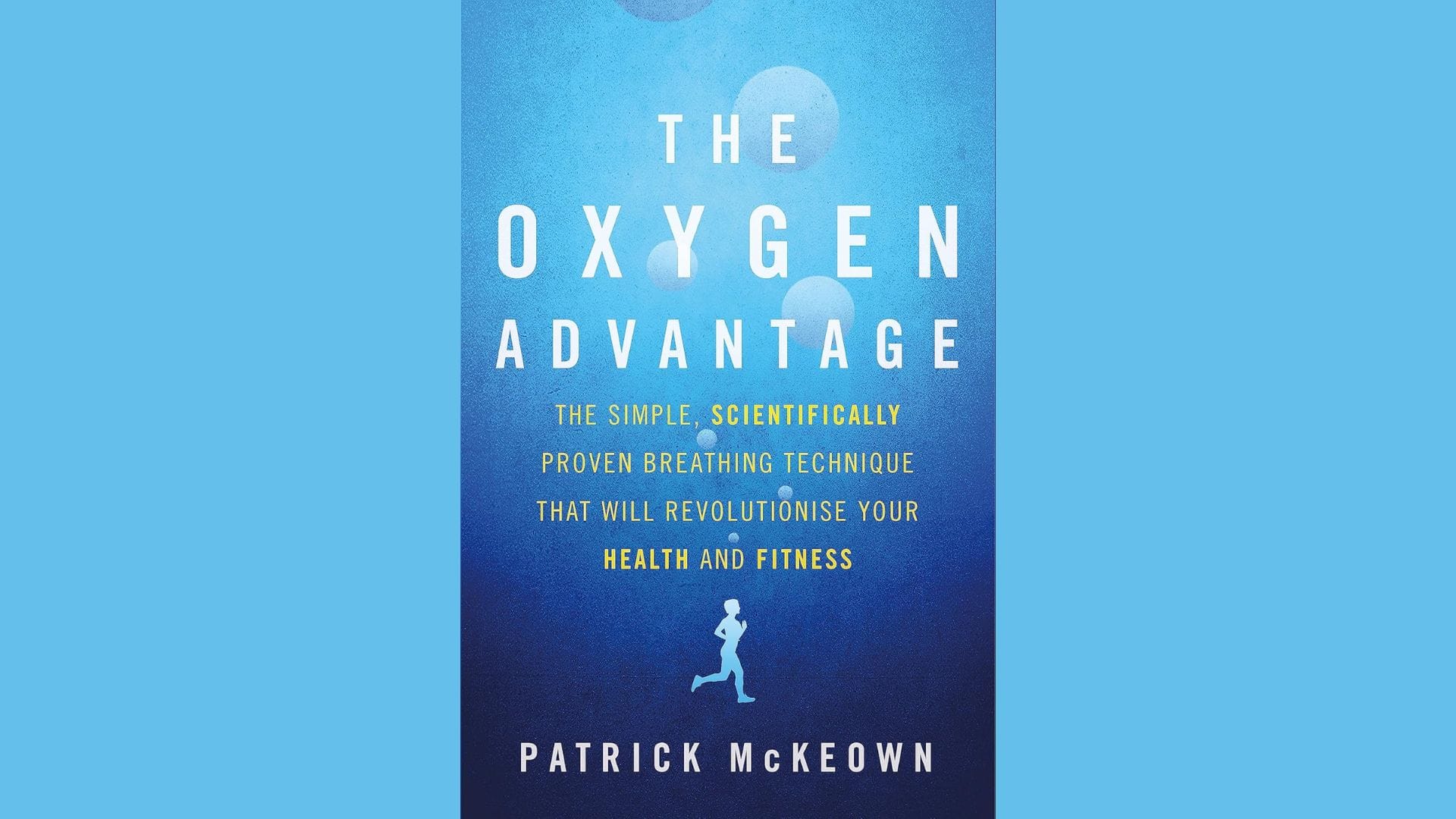Summary: The Oxygen Advantage by Patrick McKeown

In The Oxygen Advantage, Patrick McKeown explores how proper breathing techniques can improve health, reduce stress, boost athletic performance, and enhance mental clarity. McKeown emphasizes that most people breathe incorrectly, leading to poor oxygen absorption, fatigue, and chronic health problems. The book introduces practical breathing exercises that help improve oxygen efficiency, CO₂ tolerance, and overall well-being.
This summary provides a deep dive into the book's key concepts, methods, and practical tools, focusing on how simple changes in your breathing patterns can unlock better health and performance.
1. Nose Breathing vs. Mouth Breathing
One of McKeown’s primary teachings is the importance of nose breathing. He explains that humans are designed to breathe through the nose, yet many people unconsciously breathe through their mouths. Mouth breathing is associated with poor health outcomes, including sleep apnea, fatigue, and anxiety.
Benefits of Nose Breathing:
• Filters out dust, allergens, and pollutants.
• Increases nitric oxide production, which improves circulation.
• Warms and humidifies air before it enters the lungs.
• Promotes slower, more controlled breathing patterns.
Key Tip:
McKeown recommends using mouth tape to keep your mouth closed and encourage nasal breathing gently if you breathe through your mouth at night.
2. The Role of Carbon Dioxide (CO₂) in Oxygen Delivery
Most people consider oxygen the most critical gas in breathing, but McKeown explains that carbon dioxide is equally essential. The body requires a balance between oxygen and CO₂ to ensure that oxygen is effectively delivered to tissues and muscles.
The Problem with Over-Breathing:
When people over-breathe (taking in too much air), they expel too much CO₂, causing oxygen to bind too tightly to red blood cells. This means the oxygen cannot be efficiently released to the body’s cells, leading to fatigue, brain fog, and poor performance.
Key Insight:
• Breathing less is often more beneficial than breathing more.
• CO₂ tolerance can be improved with breathing exercises, leading to better oxygen utilization.
3. The Bohr Effect: Why CO₂ Matters
The Bohr Effect is a scientific principle that explains how CO₂ levels influence oxygen delivery. When carbon dioxide levels are high, oxygen is released more effectively from the blood to the body’s cells. Therefore, increasing your tolerance to CO₂ can improve oxygen delivery and overall performance.
Practical Takeaway:
Instead of trying to take deep breaths, focus on light, controlled breathing to maintain healthy CO₂ levels and maximize oxygen uptake.
4. The Buteyko Breathing Method
McKeown’s approach is heavily influenced by the Buteyko Breathing Method, developed by Dr. Konstantin Buteyko. This method emphasizes breathing less through the nose to restore natural breathing patterns and increase CO₂ tolerance.
Buteyko Exercises Include:
• Breathing through the nose at all times.
• Reducing the depth of your breathing.
• Practicing breath-holds to improve CO₂ tolerance.
Benefits of the Buteyko Method:
• Reduces symptoms of asthma and respiratory disorders.
• Improves sleep quality and reduces snoring.
• Boosts energy levels and mental clarity.
5. Breath-Holding Techniques for Performance
One of the book’s standout techniques is breath-holding exercises to boost athletic performance. McKeown explains that holding your breath after exhaling helps simulate high-altitude training, which increases red blood cell production and improves endurance.
Sample Breath-Holding Exercise:
1. Inhale gently through your nose.
2. Exhale entirely through your nose.
3. Pinch your nose and hold your breath.
4. Walk while holding your breath until you feel a strong urge to breathe.
5. Resume normal breathing and recover with light nose breathing.
This technique helps train the body to handle higher CO₂ levels, which leads to more incredible stamina and recovery times for athletes.
6. Breathing to Reduce Stress and Improve Sleep
McKeown also highlights the connection between breathing patterns and stress levels. Fast, shallow breathing triggers the fight-or-flight response, while slow, nasal breathing activates the parasympathetic nervous system, promoting relaxation.
Tips to Manage Stress with Breathing:
• Practice slow exhalations to calm the nervous system.
• Use light breathing exercises before bed to improve sleep quality.
• Avoid mouth breathing, which can contribute to insomnia and snoring.
7. The BOLT Score (Body Oxygen Level Test)
The BOLT Score is a simple way to measure your body’s oxygen efficiency and CO₂ tolerance.
How to Measure Your BOLT Score:
1. Sit in a comfortable position.
2. Inhale gently through your nose.
3. Exhale gently through your nose and pinch your nostrils closed.
4. Time: how many seconds pass before you feel the urge to breathe.
5. Release your nose and breathe normally.
Interpreting Your BOLT Score:
• Less than 10 seconds: Poor breathing habits and low CO₂ tolerance.
• 10-20 seconds: Needs improvement.
• 20-30 seconds: Functional breathing pattern.
• Above 40 seconds: Excellent CO₂ tolerance and breathing efficiency.
Checklist: Improve Your Breathing Habits
- Always breathe through your nose.
- Measure your BOLT score regularly.
- Practice light, controlled breathing.
- Incorporate breath-holding exercises into your routine.
- Use slow breathing to reduce stress and improve sleep.
- Avoid over-breathing or deep, heavy breaths.
About the Author: Patrick McKeown
Patrick McKeown is a leading expert in breathing retraining and an advocate of the Buteyko Breathing Method. He studied under Dr. Konstantin Buteyko and has spent over two decades teaching people how to breathe correctly to improve their health and performance. McKeown’s work has helped thousands of people overcome asthma, anxiety, and sleep disorders, making him a trusted authority in respiratory health.
Conclusion: Unlock Your Oxygen Advantage
Patrick McKeown’s The Oxygen Advantage provides a scientific, practical approach to breathing that can improve physical and mental performance. By making small adjustments to how we breathe—such as switching to nose breathing, increasing CO₂ tolerance, and using breath-holding exercises—we can unlock better health, greater endurance, and reduced stress.
